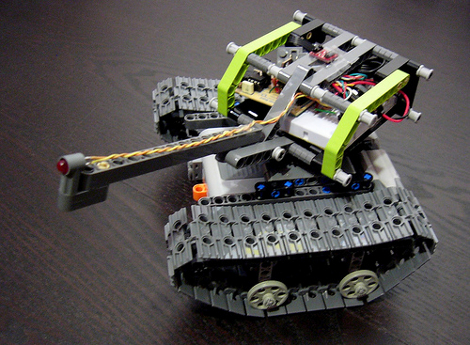
[Alan] is branching out beyond the Arduino with this clock. He’s still using the same code but built this board around an ATmega328 and the components he needed, saving his Arduino board for further development. The concept uses a character display housed in an old iPod Touch case. The build relies on an infrared sensor to actuate the LCD backlight. The closer your hand is the brighter the light.
The Maxim DS3232 RTC chip keeps time in this application. We’ve seen this little marvel used before, popular because it uses temperature compensation to maintain accuracy. If you’re interested in this part, check out the library file that [Alan] wrote for it.














